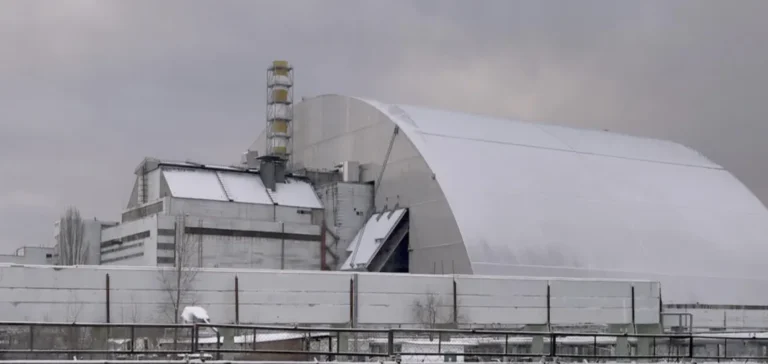The containment structure over reactor number four at the decommissioned Chernobyl nuclear plant lost its power supply following a Russian bombardment, according to Ukrainian authorities. The outage comes as the Zaporizhzhia plant in the country’s south also remains without external electricity for ten days, heightening concerns over the security of nuclear facilities in conflict zones.
Critical power supply for containment safety
Ukraine’s Ministry of Energy described the situation at Chernobyl as an “emergency”, reporting that power surges caused by the strike disabled the New Safe Confinement. This infrastructure, also known as the Chernobyl Arch, has covered the remains of reactor four since 2016 to contain radioactive materials. Technical teams were dispatched to the site to attempt to restore the electricity supply, which is essential for operating monitoring and filtration systems.
Ukrainian authorities stated that this incident follows a previous drone attack by Russia in February, which damaged the installation without triggering any radioactive release. Russia has not issued an official statement on the new outage. The International Atomic Energy Agency (IAEA) reported no increase in radiation levels at the site.
Pressure on the Zaporizhzhia nuclear plant
The Zaporizhzhia nuclear plant remains under Russian control since March 2022. According to the site’s Russian operator, the situation is “under control”, although external power has been cut off since September 23. The IAEA confirmed that Europe’s largest nuclear facility is currently running on emergency diesel generators.
IAEA Director General Rafael Grossi described the blackout as the longest since the beginning of the conflict. While no immediate danger has been identified, the agency continues to highlight the increasing risks posed by repeated outages and overall site instability. Zaporizhzhia has experienced ten power cuts since Russia invaded Ukraine in February 2022.
Prolonged conflict leaves nuclear sites exposed
Ukrainian nuclear facilities have become recurring targets in the war between Kyiv and Moscow. On the first day of the invasion, Russian forces seized control of Chernobyl, before withdrawing a month later. Ukraine’s military reports that several key energy sites have been targeted in recent weeks, including those essential to nuclear facility safety.
Ukrainian President Volodymyr Zelensky stated that “each day Russia prolongs the war” represents “a global threat”, stressing the vulnerability of the country’s atomic infrastructure. Ukraine accuses Russia of using nuclear sites as strategic leverage, a claim denied by Moscow, which maintains a military presence around the occupied plants.






















